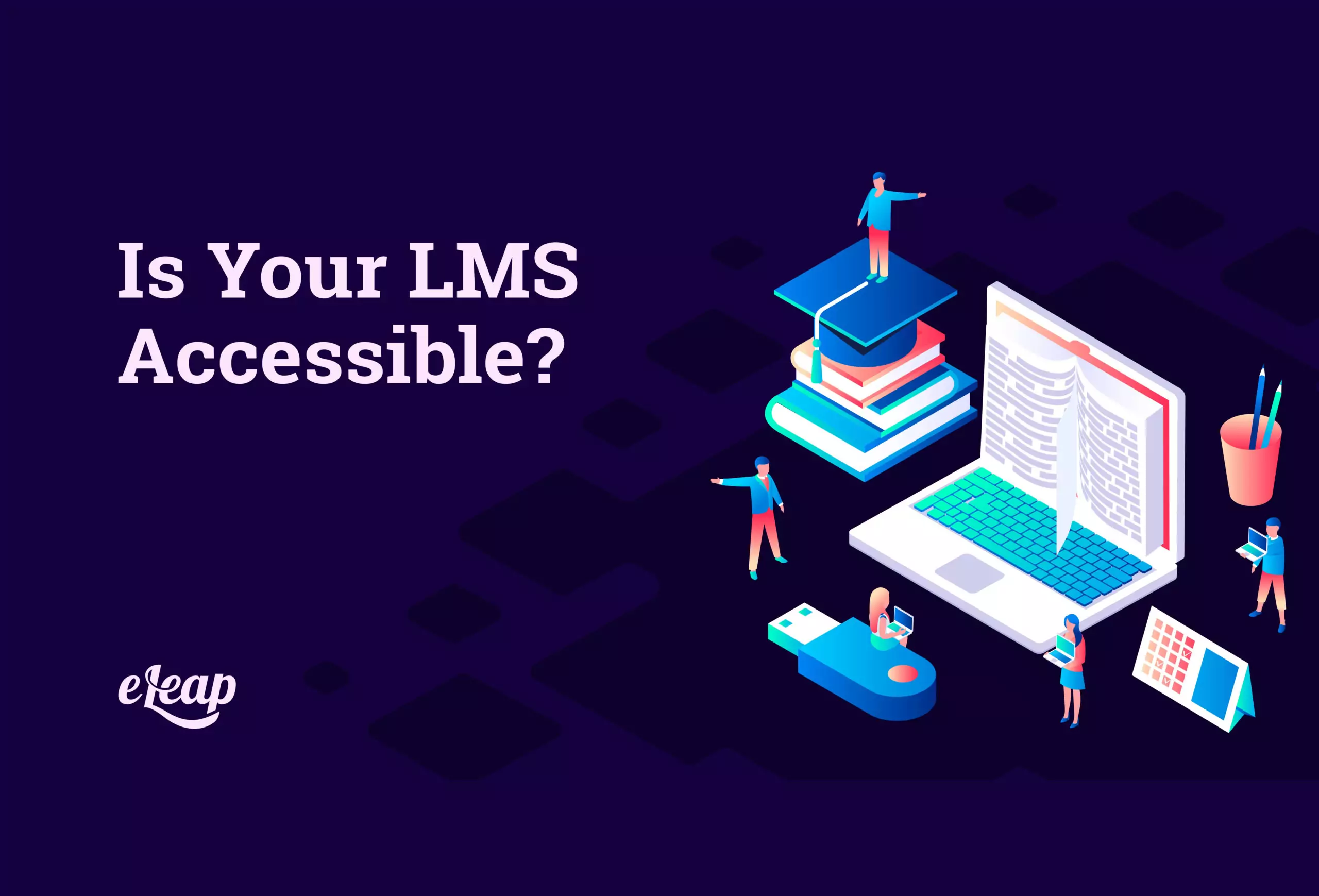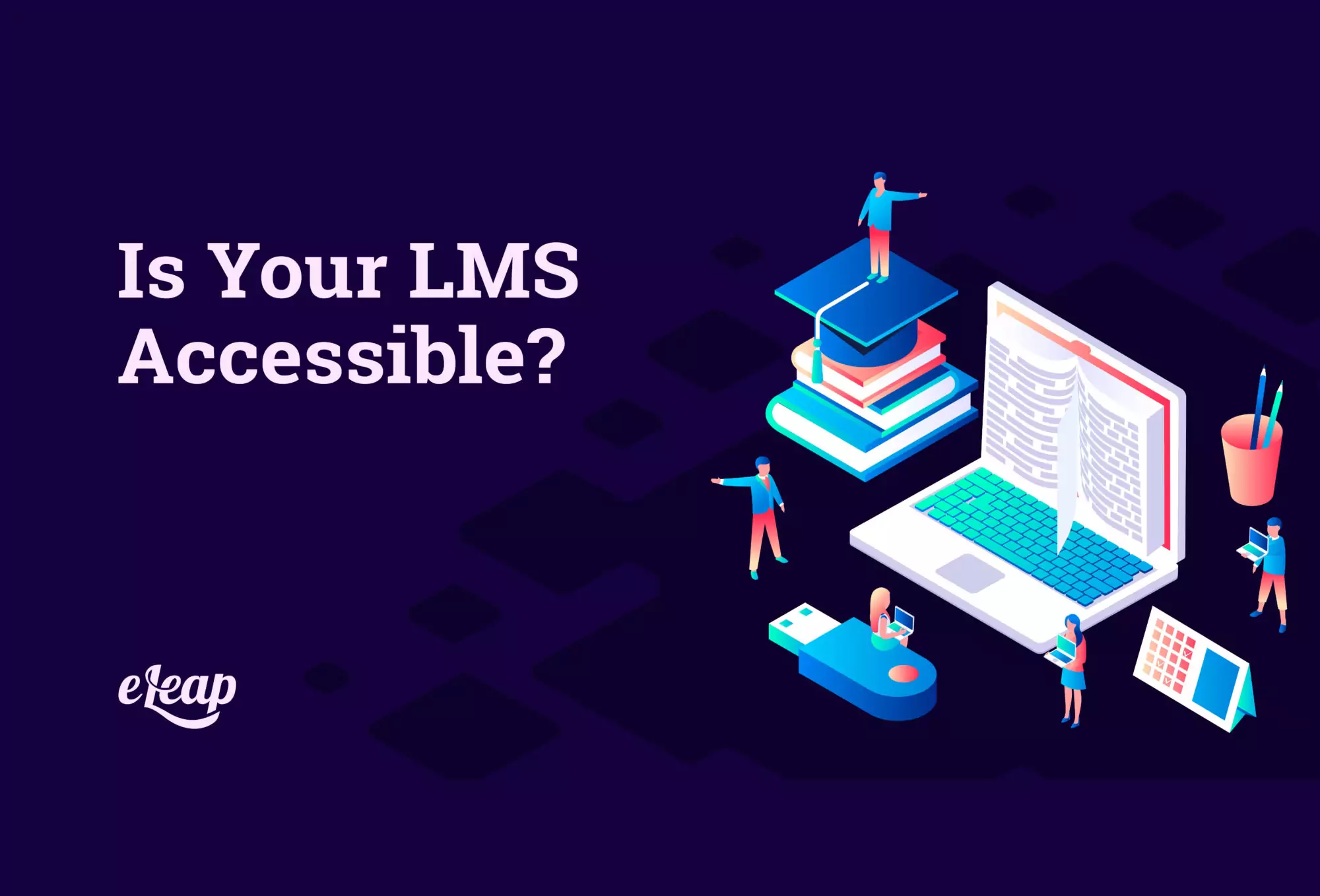Is Your LMS Accessible?

As technology advances, it becomes easier to make the workplace a more accessible, inclusive environment for all workers. It’s one of the biggest benefits of the tech-obsessed world we live in, and there’s no reason why any organization shouldn’t use technology’s accessibility abilities to its advantage.

In the eLearning industry, accessibility refers to the use of technology to create learning content that is accessible to both non-disabled learners and those with disabilities alike. These days, accessibility extends beyond just physical accommodations in the real world, it’s also imperative that learners can access technology and software platforms. People with disabilities should be able to access technology without limitations and learning materials should be clear and understandable to everyone.
Beyond just being generally user-friendly, learning platforms should address the needs of users with hearing, vision, cognitive, and other limitations. Even organizations using earlier versions of hardware and software should be able to allow disabled individuals to access content and materials.
Of course, providing accessibility for people of all abilities is beneficial for employees, but also for the organization itself. If disabled employees are less able to access training content than others, it puts them at a disadvantage and may render them unable to perform their job properly. In addition, legal aspects of accessibility must be taken into consideration. Failing to provide accessible online training is widely considered discriminatory in many developed nations, including the United States and the United Kingdom. It’s crucial to make learning easy and barrier-free to enhance the user experience for everyone.
What’s The Difference Between Accessibility and Usability?
In the world of eLearning, you might frequently see or hear the terms usability and accessibility. Many people think that the two terms are interchangeable, but actually, there are important differences that should be noted.
People with disabilities, in particular, may experience discrimination because of accessibility issues. In this case, web accessibility refers to the accessibility of online learning tools for people with disabilities that allow them to collaborate and contribute equally with their peers.
Usability, by contrast, is the process of designing web products that have high efficiency, effectiveness, and satisfaction. User experience is a component of usability and affects all users of a web tool, not just disabled ones.
Although the two terms are different and incorporate differing things, many accessibility requirements enhance the usability for everyone, including those with disabilities. For example, usability features such as the ability to adjust the contrast of a screen benefit everyone, including people who might struggle to read due to eyesight problems as well as users who simply wish to adjust the contrast for reading in low light. Similarly, captions are a usability feature, as they help deaf users but are also beneficial in both noisy and quiet settings.
Accessibility is different from how content appears visually because it pertains to technical requirements. Among these are screen readers for those with hearing disabilities, voice recognition programs, and screen magnifiers to enlarge the content.
So, in certain cases, usability can help with accessibility, but they are not the same. To allow easy access for all users regardless of ability, a platform needs to be both usable as well as accessible.
The Four Principles of Accessibility
To ensure your organization is making content accessible, it should adhere to the four principles outlined in the Web Content Accessibility Guidelines (WCAG 2.0).
- It should be perceivable. All users should be able to perceive the content and user interface elements.
- User-friendly navigation and user interface components must be included.
- Platforms should feature an easily understandable user interface, as well as clear information accessible by all.
- Assistive technologies should be able to reliably interpret learning content.
How to Measure Accessibility
Accessibility levels are defined by the W3C and WCAG 2.1 as A, AA, and AAA.
- Level A – The most straightforward level because it mainly deals with usability. For example, video and audio recordings being required to have captions.
- Level AA – In addition to the criteria that are already listed in A, AA has 20 additional criteria. For example, unless you upload a logo, you are not allowed to upload images of text so that assistive technologies such as screen readers can relay information effectively. Only actual text is allowed.
- Level AAA – This level is preferred by most organizations since it ensures that content is understandable, operable, and suited for everyone, including visually and hearing-impaired learners. In addition to what A and AA already include, AAA comes with 28 additional success criteria. In many cases, a sign language interpreter may be needed for audio.
Accessibility and eLearning
To achieve economic and social change, education and learning have a vital role to play. Education is, in many cases, viewed as a prerequisite for entering professional careers and living comfortably. Similarly, training for a job position is required for an individual to succeed and thrive at their job.
With more traditional training models, learners and instructors would attend training sessions one-on-one in a physical location. In many cases, this made learning inaccessible for those with disabilities. For example, learners with hearing difficulties might not be able to properly understand an instructor, or in many cases, can’t hear them at all. This would put the hearing impaired at a significant disadvantage to other learners. But, with today’s technology, hearing-impaired learners can view webinars with closed captions, allowing them the same experience as those without hearing problems.
Additionally, technology means that learners can access content wherever they have an internet connection, so there is no longer a need to attend in person. This is critical, as the homes and workplaces of people with disabilities are often designed to accommodate their needs in terms of physical access, assistive technology, and transportation.
When physical limitations like location or in-person training are addressed, inclusive education can be achieved. The accessibility of eLearning is considered as an integral part of inclusiveness. A learning system’s design, its user interfaces, and other elements all affect how it is accessible to learners with disabilities.